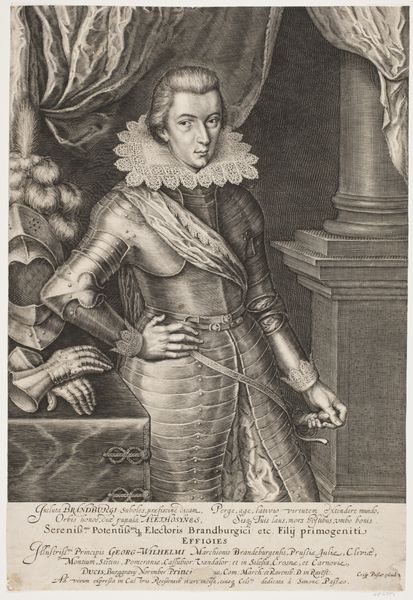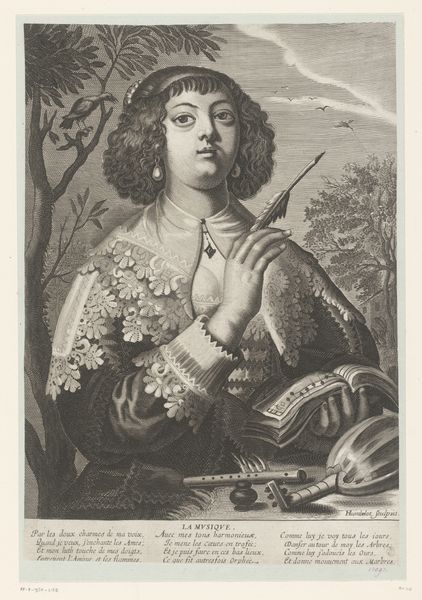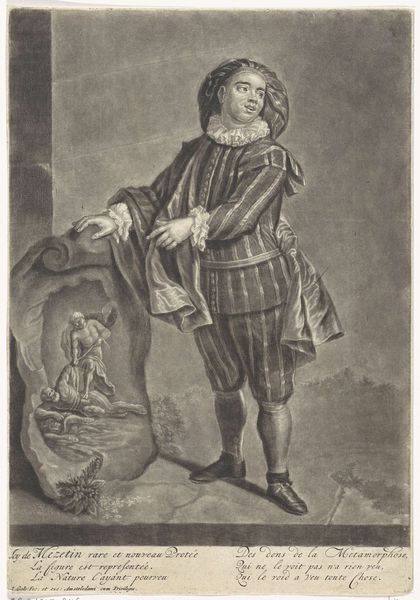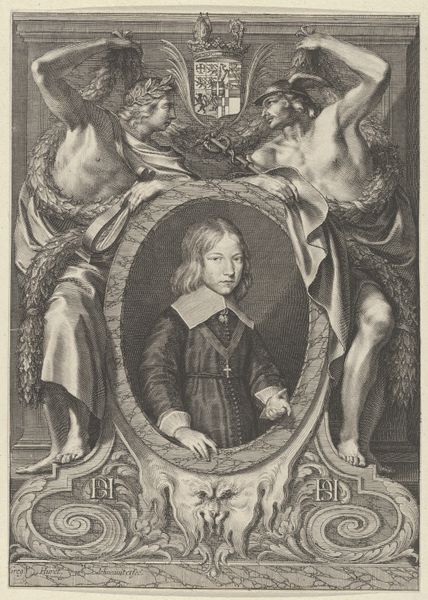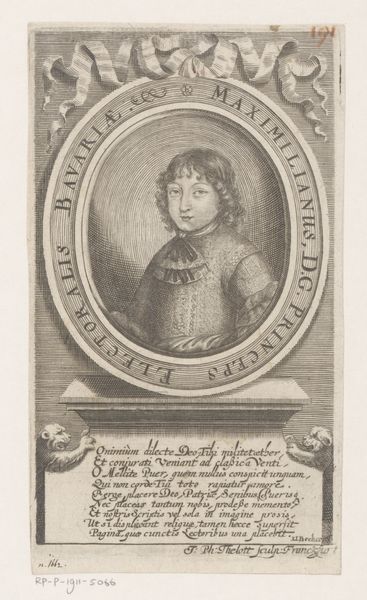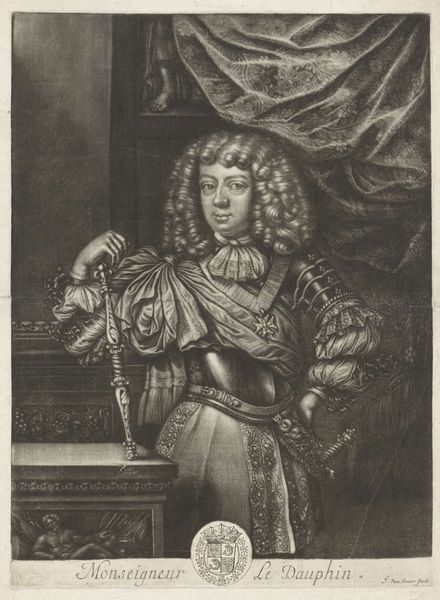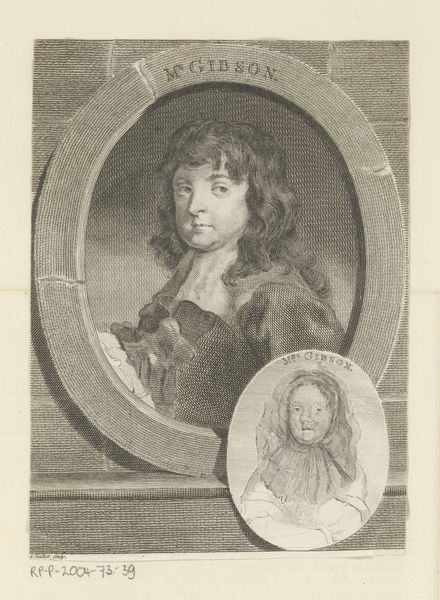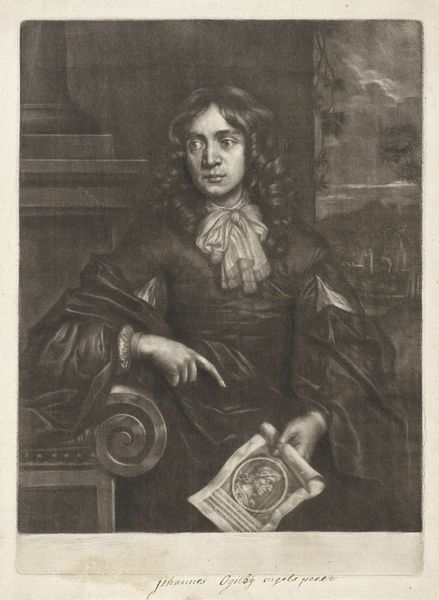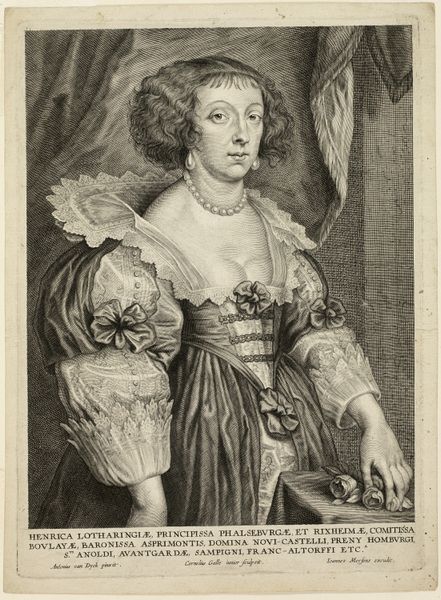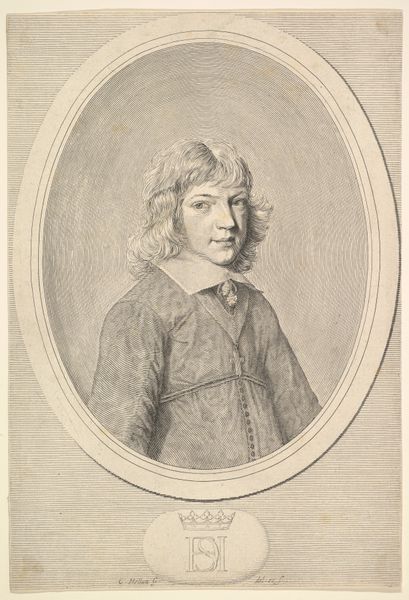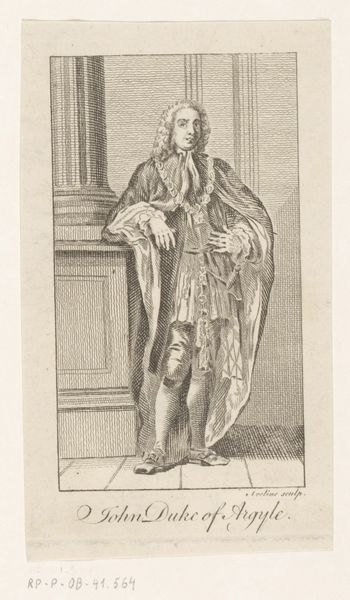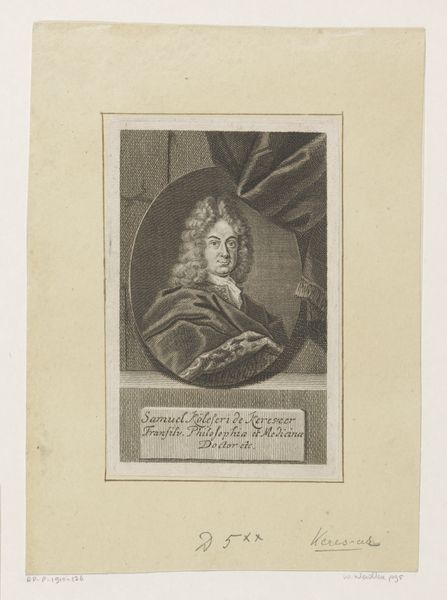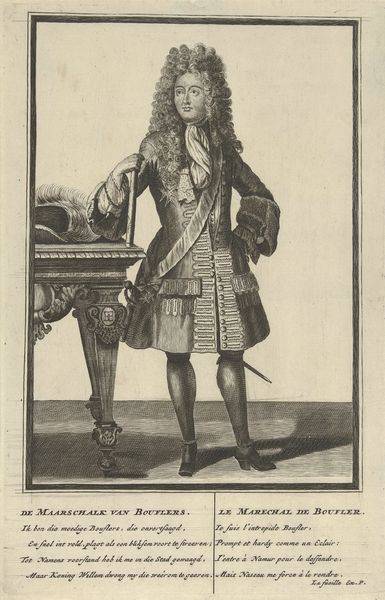
drawing, print, engraving
#
portrait
#
drawing
#
baroque
# print
#
portrait drawing
#
engraving
Dimensions: Sheet: 9 7/8 × 7 1/8 in. (25.1 × 18.1 cm) cut within platemark
Copyright: Public Domain
Wenceslaus Hollar created this print of Charles II using etching in 1649. In this intaglio printmaking technique, Hollar would have coated a metal plate with a waxy, acid-resistant substance. Using a fine needle, he would then draw the portrait, exposing the metal underneath. An acid bath would then bite into these lines, creating grooves in the plate. To create the print, Hollar would have inked the plate, forcing it into these tiny recesses, and then wiped the surface clean. Finally, he would press paper against the plate, transferring the ink and creating the image. Look closely, and you can see how the varying depths of the etched lines create subtle gradations of light and shadow, capturing the textures of fabric, hair, and skin. Prints like these were a vital means of disseminating images and information in the 17th century. They represent a fascinating intersection of artistry, craft, and the burgeoning culture of mass production. Appreciating the skill and labor involved reminds us that “fine art” has always been intimately connected to broader social and economic forces.
Comments
No comments
Be the first to comment and join the conversation on the ultimate creative platform.
